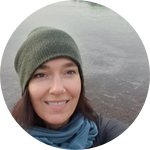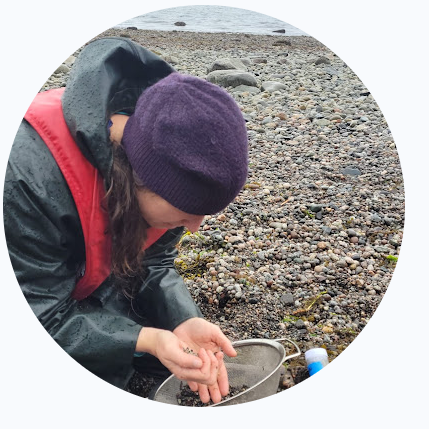About This Project
We are conducting microplastic shoreline surveys and would like to explore if microplastic is commonly ending up in the tissues of shellfish in areas where high concentrations of microplastics are found. And if so, can the shellfish tissue be analyzed to detect chemical leaching from the microplastic. The results may have implications on food security and shellfish farming that utilizes plastic aquaculture farming gear.
Ask the Scientists
Join The DiscussionWhat is the context of this research?
I'm located in a coastal Canadian region with advanced waste management systems that is also home to one of British Columbia's most prolific aquaculture farming regions. The plastic pollution that washes up on our shorelines is predominately from this industry. Over the past four years, our team has conducted extensive shoreline cleanups and have found less than 1% of marine debris collected to be urban litter or internationally sourced. On south facing aspects and in inlets with high concentrations of aquaculture farms, we're finding high levels of microplastic along shorelines. Our team has been sampling high tide lines to evaluate the occurrence and levels of microplastic washing in with each tide cycle. Shellfish are naturally prevalent in the region and we'd like to explore if there is a direct correlation with high levels of microplastic on shorelines and microplastic being found in the tissue of shellfish.
What is the significance of this project?
This project would provide some data on if areas with high microplastic concentrations are finding their way into shellfish tissue more readily. This research can help provide data on if clams that generally live below the surface are being affected to the same degree as oysters, which live on the surface in the intertidal zone. And if mussels, which live near the surface but not directly on shorelines are affected in the same way.
What are the goals of the project?
The goal of this project is to see if there is a direct correlation between shorelines with high concentrations of microplastics and microplastic found in the tissue of shellfish. The project can start as soon as funding is available. We intend to work with a local Indigenous youth program to help carry out the field research work. Microplastic shoreline surveys will be conducted using Ocean Diagnostics' methodology and technology. We have 2 community toolkits. After collecting shellfish species from the sampling area, we will dissect the tissue at the Tla'amin Nation fishery facility with the potential to send sample collections to the Vancouver Island University's Deep Bay Marine Field Station for further or expanded analysis.
Budget
Each budget item funds a component of the project and combined, provides funding for the entirety of the research project including post research reporting and data compilation. This funding will allow for small employment opportunities for Indigenous youth to partake in the field research, which is mainly being conducted within the core territory of the Tla'amin Nation.
Endorsed by
 Project Timeline
Project Timeline
Three weeks of project planning and project coordination. A week of field work will then be required, surveying shorelines for microplastic concentrations and collecting shellfish samples.
Samples will be shipped to a lab for resin and tissue analysis. Two weeks will be taken to compile data, photos and data analysis in collaboration with the lab. Potential challenges may occur with shipping tissue samples. Dr Clara Manno, Biological Oceanographer, will act as the project mentor.
Mar 10, 2025
Project planning, survey dates scheduled, field work crew confirmed
Apr 28, 2025
Shellfish samples shipped to lab
Apr 28, 2025
Microplastic shoreline surveys conducted
Jun 17, 2025
Project Launched
Jul 29, 2025
Project Launched
Meet the Team
Affiliates
Abby McLennan
I've been involved in solid waste management since 2011. In 2017 I embarked into marine debris and started project managing and leading remote and complex shoreline cleanups in 2020. Throughout this time, the prevalence of the aquaculture industry and related policy became a passionate interest of mine as the majority of the material we find washing up on shorelines is from industry. Larger questions as to how plastic pollution is affecting the environment, marine species and the food chain is something I'd like to explore more and where I'd like to see more research focused. Science relating, particularly to how plastic pollution might be affecting human health, will likely drive policy change which I feel is required to make a change in the material being used and increase management of aquaculture to decrease the amount of leakage coming from this industry.
Additional Information
The area we are wanting to conduct this research project in is of cultural significance to the local First Nation community and is currently a shellfish lease area held by the local First Nation. The head of an inlet where we plan to survey is home to a large number of aquaculture farms. The head of this inlet has consistently resulted in being the most polluted sampling region where our team had been conducting microplastic survey sampling over the past few years.
We'd like to complete another microplastic shoreline survey of this area to provide another dataset and to then sample shellfish tissue for the first time. Data collected can also lend information for the aquaculture industry. The more farms there are in an area or the more microplastic farms may be seeing could be resulting in higher levels of microplastic in their shellfish populations depending on if we find a correlation, in addition to the presence, or not, of chemicals in the shellfish tissue associated with certain plastic resins.
Project Backers
- 2Backers
- 152%Funded
- $7,600Total Donations
- $2,533.33Average Donation


